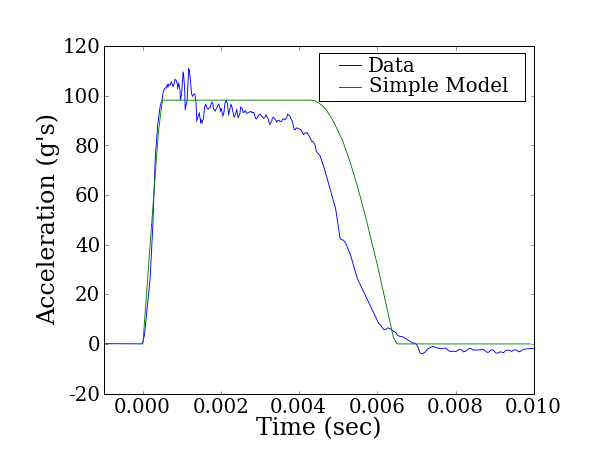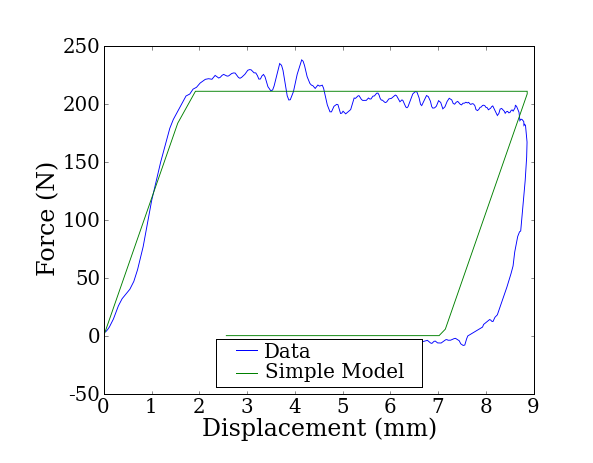Impact Dynamics, High-Speed Material Tesing, and Finite Element Analysis
Goals:
- Create a device for high-speed material testing whose internal resonances don't contaminate the material response data
- Create intuitive finite element models of the material impact tests that correlate well with the experimental data
- Extract material parameters from the combination of experimental data and computer simulation
Background
Automobile crashes cost the lives of 30,000 Americans in an average year. Some of these deaths might be prevented through the design of safer automobiles. Crashworthiness design relies heavily on computer simulations because reliable physical tests cannot be run until very late in the design of a vehicle. There are often discrepancies between simulations and the results of physical tests and these differences can lead to failures of critical tests late in the design cycle when correcting the problem is often costly and difficult.
This work focuses the removal of two barriers to more accurate crash simulations: not being able to get accurate material data at impact speeds and the difficulty of modeling the contact between two colliding bodies during a crash.
Getting accurate material properties at impact speeds is difficult because the testing often excites vibrations within the test device. The natural frequencies of the test device can lead to mechanical ringing that contaminates the impact response data. If the frequency of this ringing is not sufficiently high, it is very difficult to filter out this mechanical noise without affecting the material response data. Initial investigations have lead to the discovery of a test device whose internal resonances are well separated in frequency from the material response data, allowing material data to be filtered without adversely affecting the data. Two designs for an improved device are also being pursued.
The finite element portion of this work builds on SfePy, an open-source finite element analysis package written in Python. This project aims to add to SfePy whatever capabilities are necessary to model impact dynamics problems.
Example Material Test
A test device has been found that gives satisfactory results (an improved device is being designed). The existing device drops a small mass onto a material sample from a variable height (maximumu of about 1~m). There is an accelerometer on the back of the mass to measure the impact response of the material. A light gate measures the impact velocity. The material samples are roughly 18mm cubes.
Dropping Mass:
|
Dropping Mass Tester and Light Gate:
|
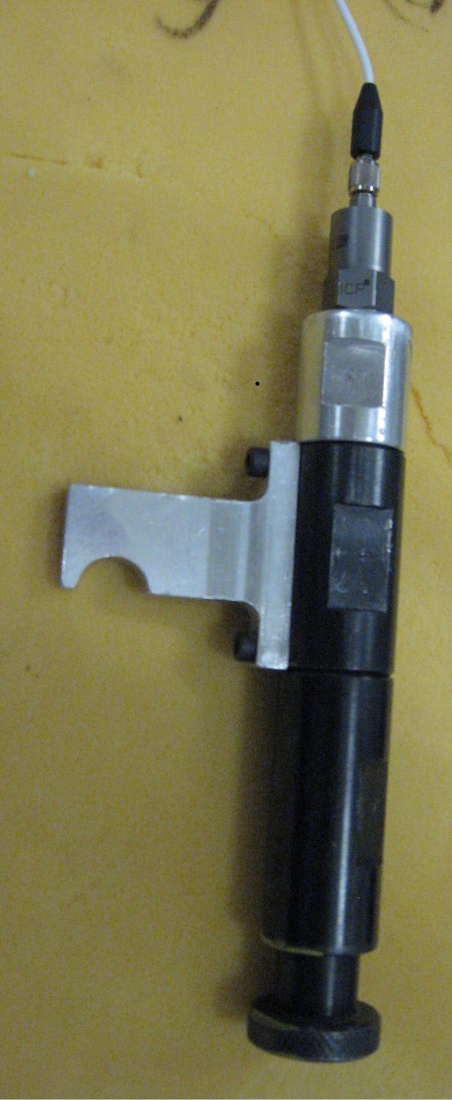
|
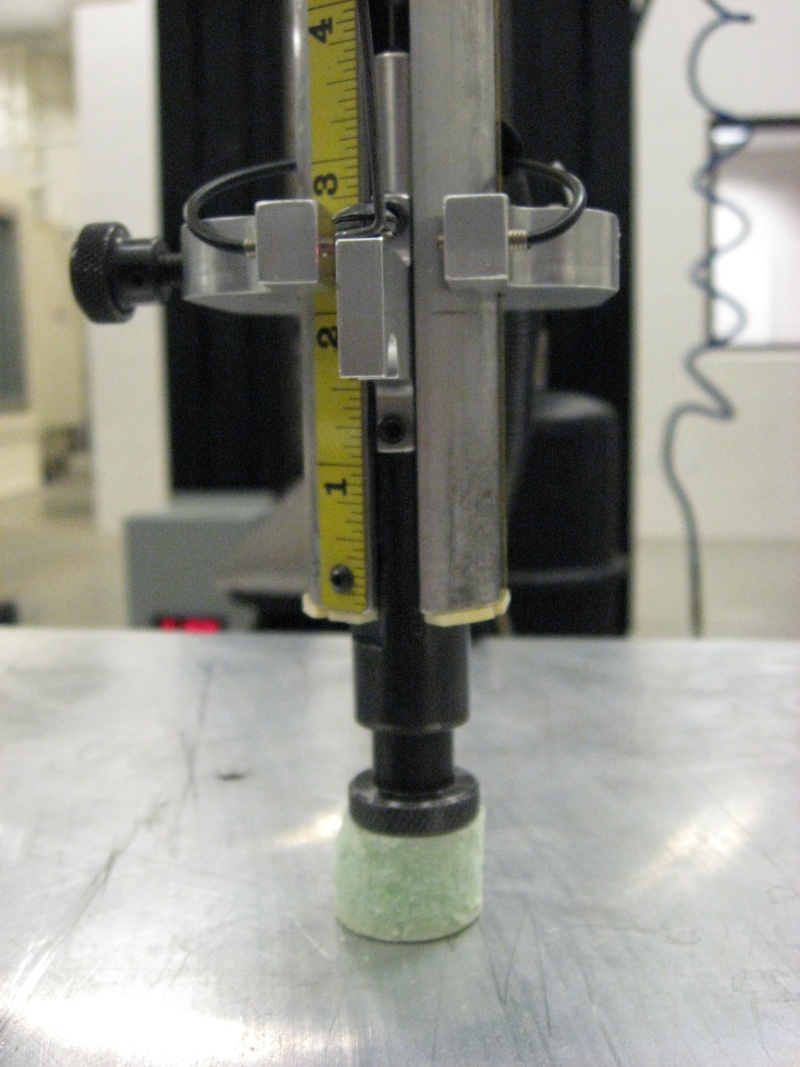
|
Movie:
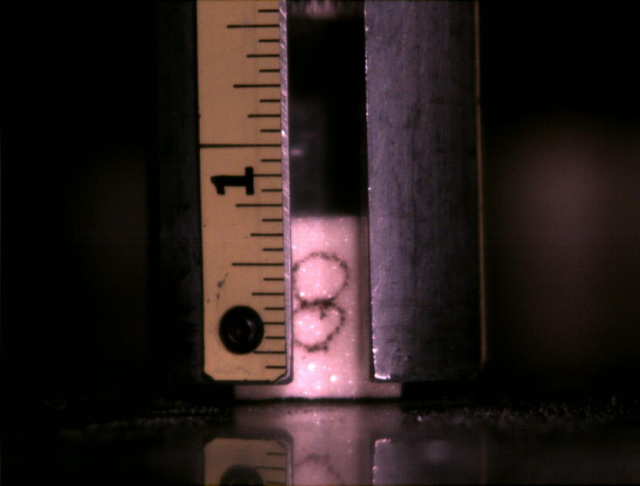
Example Data:
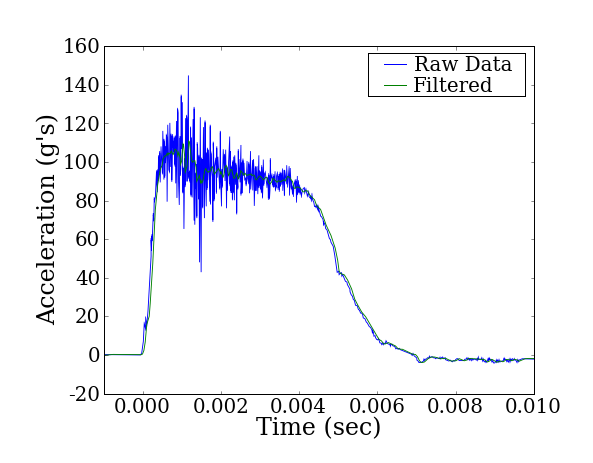
The acceleration vs. time signal is recorded and filtered. Knowing the initial velocity of the dropping mass and integrating the accelerometer signal allows the velocity to be calculated as a function of time. A second integration gives the displacement. Knowing mass and acceleration allows the force to be calculated. The force vs. displacement curve can then be converted into a stress vs. strain plot.
Fitting a Simple Material Model:
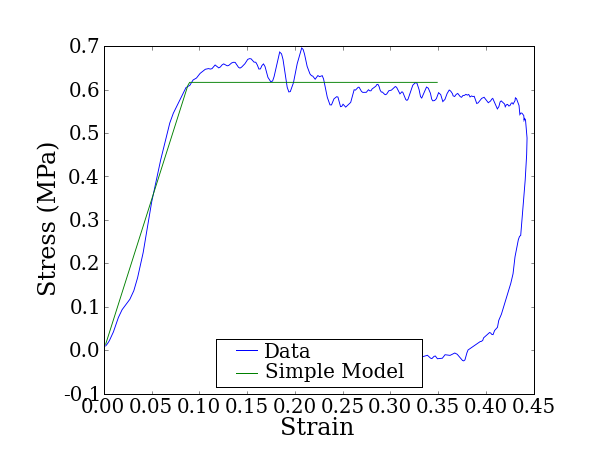
A bilinear model was fit to the stress vs. strain plot. The slope of the second portion is nearly zero, making the material model similar to elastic/perfectly plastic.
Using the Simple Material Model:
The simple model was used in an ode simulation to try and recreate the test. The acceleration vs. time and force vs. deflection curves are shown below: